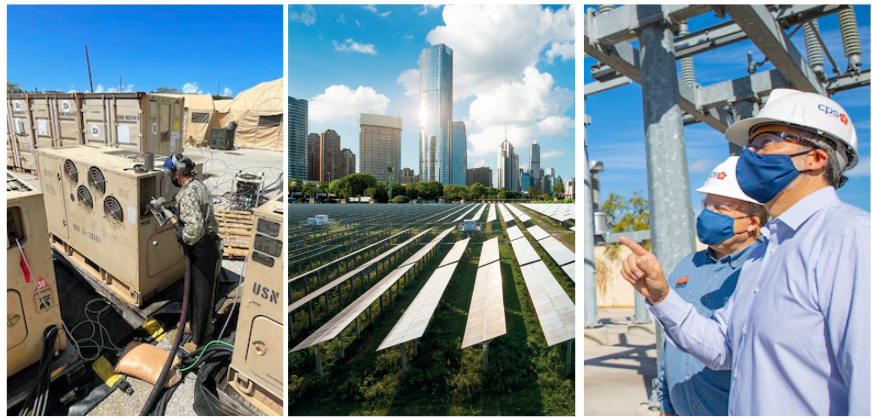September 21, 2022 (Arlington, Virginia)—The International Energy Agency (IEA) projects that the private sector will spend an average of $2.74 trillion dollars annually between 2016 and 2050 to achieve net zero carbon dioxide emission goals. The vast majority of these investments will be focused on the large-scale deployment of critical energy technology and infrastructure, such as photovoltaic solar farms, biofuel production facilities, geothermal power plant construction, hydrogen storage/distribution networks.
Based on a strong demand from our Department of Defense (DoD) partners and the growing volume of opportunities for dual-use commercial solutions coming from the energy tech sector, the Defense Innovation Unit (DIU) launched its Energy Portfolio in late 2020. The team’s projects are focused on enhancing operational energy capabilities and strengthening the resilience of military installations through the use of innovative energy technology. In the last 18 months, DIU’s energy portfolio has launched 21 projects.

The critical technologies changing the nature of energy generation, distribution, and usage are being led today by the commercial sector. On the installation front, DoD operates more than 500,000 buildings and structures comprising our Military’s barracks, commissaries, data centers, office buildings, laboratories, and aircraft maintenance depots. The DoD needs access to secure and reliable energy that is resilient to natural and man-made disruptions while also supporting critical loads for days or weeks at a time. Without resilient, decentralized, and renewable power, our installations are under constant threat of power outages.
On the operational energy front, DoD uses nearly five trillion gallons of fuel annually. Our reliance on fossil fuels (i.e., diesel, JP8, etc.) poses a significant vulnerability to our budgets, supply chains, and operational capabilities. While the fully-burdened cost of transporting fuel remains high, long-term access to fuel also represents a risk point. The future fight requires disaggregated, distributed units with a greater demand for reliable, efficient power sources.
Energy is a cross-service, cross-agency, and cross-warfighting problem. As a joint unit focused on integrating commercial technology into DoD, DIU is well-suited to bring emerging solutions to bear to tackle DoD’s greatest energy challenges. DIU works to lower the barriers to entry for novel commercial technologies and technology providers, making it easier to test, develop, and acquire solutions at speed and scale.
At the September 2022 Energy Expo, we are showcasing the following energy prototype efforts:
Tactical Vehicle Hybridization: Commercial and personal cars and trucks have moved rapidly toward hybrid and electric models, but the military is just now looking to retrofit tactical vehicle fleets with hybrid energy-capture systems that include on-board power to support key systems. So far, this project has shown a number of advantages, including extending range and days of operation between refueling, minimizing casualties and costs from fuel logistics and expanding the duration of silent overwatch operations.
Arctic Grid Energy Solutions (AGES): Continuous, reliable power is required for sustained Arctic operations that include a high-performance microgrid with energy storage capabilities. Other advantages include: reductions in generator fuel resupply, capture of waste heat given off by internal or external components and higher power quality for mission critical equipment
Electric Search and Rescue (eSAR): Current military small watercraft are powered by internal combustion engines that create logistic, maintenance, storage, detection, crewing, and environmental challenges. To enhance operational flexibility, and reduce logistics and maintenance burdens, DIU is prototyping a high-power, electric small craft capable with reduced or optional crews on missions ranging from search and rescue, to insert/extract, to payload delivery.
Constructive Scale Additive Manufacturing (CSAM): Battlefield construction is time consuming, expensive, and dangerous. DIU is partnering with the U.S. Army’s Installation Management Command (IMCOM), with continued support from the U.S. Army Engineer Research and Development Center (ERDC), to continue DIU’s Construction Scale Additive Manufacturing (CSAM) project by building three 3D-printed barracks using ICON’s Vulcan construction system at Ft. Bliss, TX.
Interested in learning more? Connect with us at energy@diu.mil
